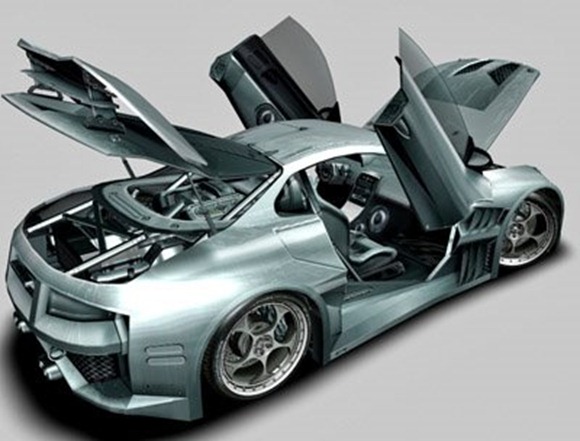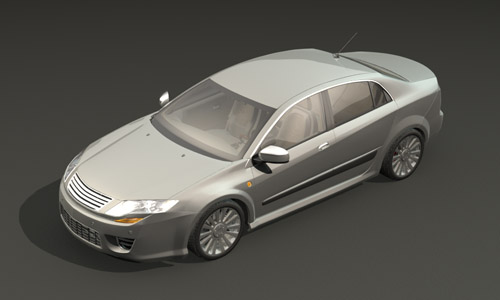Pic Of Cars Definition
Source (google.com.pk)Originally, an engine was a mechanical device that converts force into motion. Military devices such as catapults, trebuchets and battering rams are referred to as siege engines. The term "gin" as in cotton gin is recognised as a short form of the Old French word engin, in turn from the Latin ingenium, related to ingenious. Most devices in the industrial revolution were called engines, and this is where the steam engine gained its name.
The term motor was originally used to distinguish the new internal combustion engine-powered vehicles from earlier vehicles powered by steam engines, such as the steam roller and motor roller, but may be used to refer to any engine.
In modern usage, the term engine describes devices capable of performing mechanical work, as in the original steam engine. In most cases, the work is produced by exerting a torque or linear force, which operates other machinery that generates electricity, pumps water, or compresses gas. In the context of propulsion systems, an air-breathing engine is one that uses atmospheric air to oxidise the fuel rather than supplying an independent oxidizer, as in a rocket.
While colloquially interchanged, there is a difference between a motor and an engine. In common usage, an engine burns or otherwise consumes fuel, and is differentiated from an electric motor that derives power without changing the composition of matter. A heat engine may also serve as a prime mover, a component that transforms the flow or changes in pressure of a fluid into mechanical energy. An automobile powered by an internal combustion engine may make use of various motors and pumps, but ultimately all such devices derive their power from the engine. Another way of looking at it is that a motor receives power from an external source, and then converts it into mechanical energy, while an engine creates power from pressure (derived directly from the explosive force of combustion or other chemical reaction, or secondarily from the action of some such force on other substances such as air, water, or steam).
Devices converting heat energy into motion are commonly referred to simply as engines.
Simple machines, such as the club and oar (examples of the lever), are prehistoric. More complex engines using human power, animal power, water power, wind power and even steam power date back to antiquity. Human power was focused by the use of simple engines, such as the capstan, windlass or treadmill, and with ropes, pulleys, and block and tackle arrangements; this power was transmitted usually with the forces multiplied and the speed reduced. These were used in cranes and aboard ships in Ancient Greece, as well as in mines, water pumps and siege engines in Ancient Rome. The writers of those times, including Vitruvius, Frontinus and Pliny the Elder, treat these engines as commonplace, so their invention may be more ancient. By the 1st century AD, cattle and horses were used in mills, driving machines similar to those powered by humans in earlier times.
According to Strabo, a water powered mill was built in Kaberia of the kingdom of Mithridates during the 1st century BC. Use of water wheels in mills spread throughout the Roman Empire over the next few centuries. Some were quite complex, with aqueducts, dams, and sluices to maintain and channel the water, along with systems of gears, or toothed-wheels made of wood and metal to regulate the speed of rotation. In a poem by Ausonius in the 4th century AD, he mentions a stone-cutting saw powered by water. Hero of Alexandria is credited with many such wind and steam powered machines in the 1st century AD, including the Aeolipile, but it is not known if any of these were put to practical use.
Medieval Muslim engineers employed gears in mills and water-raising machines, and used dams as a source of water power to provide additional power to watermills and water-raising machines. In the medieval Islamic world, such advances made it possible to mechanize many industrial tasks previously carried out by manual labour.
In 1206, al-Jazari employed a crank-conrod system for two of his water-raising machines. A rudimentary steam turbine device was described by Taqi al-Din[7] in 1551 and by Giovanni Brancain 1629.
In the 13th century, the solid rocket motor was invented in China. Driven by gunpowder, this, the simplest form of internal combustion engine was unable to deliver sustained power, but was useful for propelling weaponry at high speeds towards enemies in battle and for fireworks. After invention, this innovation spread throughout Europe.
A petrol engine (known as a gasoline engine in North America) is an internal combustion engine with spark-ignition, designed to run on petrol (gasoline) and similar volatile fuels. It was invented in 1876 in Europe. In most petrol engines, the fuel and air are usually pre-mixed before compression (although some modern petrol engines now use cylinder-direct petrol injection). The pre-mixing was formerly done in a carburetor, but now it is done by electronically controlled fuel injection, except in small engines where the cost/complication of electronics does not justify the added engine efficiency. The process differs from a diesel engine in the method of mixing the fuel and air, and in using spark plugs to initiate the combustion process. In a diesel engine, only air is compressed (and therefore heated), and the fuel is injected into very hot air at the end of the compression stroke, and self-ignites.
Pic Of Cars Free Wallpaper Pics Pictures Hd for Desktop Iphone Mobile HD 1080p

Pic Of Cars Free Wallpaper Pics Pictures Hd for Desktop Iphone Mobile HD 1080p

Pic Of Cars Free Wallpaper Pics Pictures Hd for Desktop Iphone Mobile HD 1080p

Pic Of Cars Free Wallpaper Pics Pictures Hd for Desktop Iphone Mobile HD 1080p

Pic Of Cars Free Wallpaper Pics Pictures Hd for Desktop Iphone Mobile HD 1080p

Pic Of Cars Free Wallpaper Pics Pictures Hd for Desktop Iphone Mobile HD 1080p

Pic Of Cars Free Wallpaper Pics Pictures Hd for Desktop Iphone Mobile HD 1080p

Pic Of Cars Free Wallpaper Pics Pictures Hd for Desktop Iphone Mobile HD 1080p

Pic Of Cars Free Wallpaper Pics Pictures Hd for Desktop Iphone Mobile HD 1080p

Pic Of Cars Free Wallpaper Pics Pictures Hd for Desktop Iphone Mobile HD 1080p

